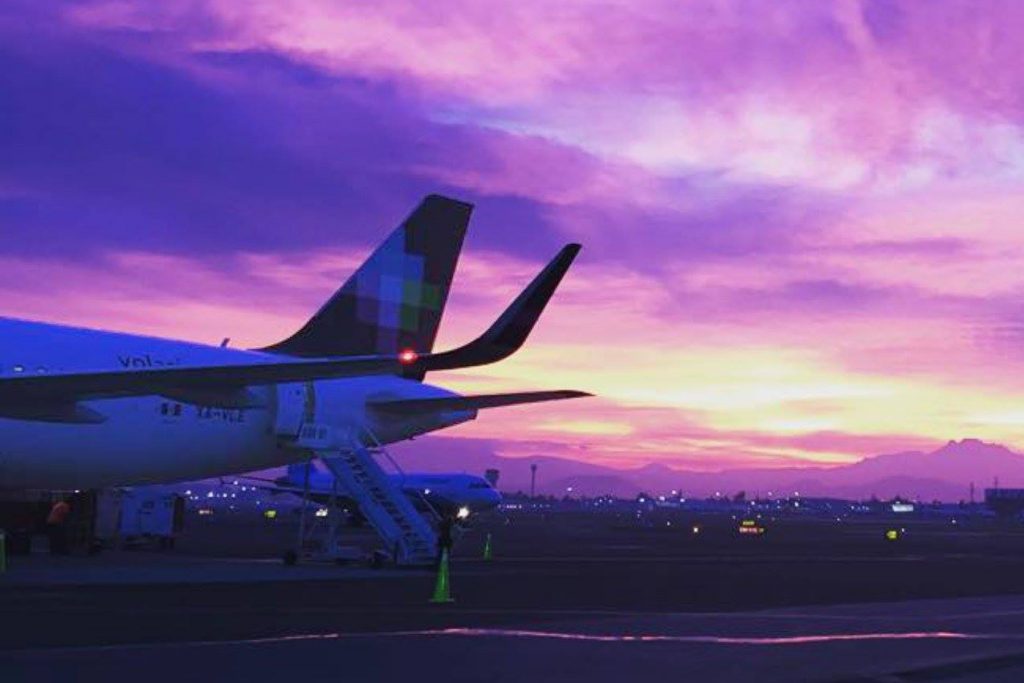Pandemic-Strengthened Volaris Plots Aggressive Fourth-Quarter Growth

Photo Credit: Volaris is one of the few airlines in the world to say it's in a better position now than before the pandemic. Volaris / Volaris
Although most airlines see hope in the fourth quarter and beyond, few can say they are in better shape now than they were before the Covid-19 pandemic ravaged the industry. But that's precisely what Mexican ultra-low-cost carrier Volaris claims in its third-quarter results and its guidance for the near-term future.
"Volaris is in a stronger position than when the pandemic began," CEO Enrique Beltranena said during the company's third-quarter earnings call on Friday. The carrier is not looking to cut any routes or capacity but is focused on aggressive growth, he said.
And by most measures, this is no idle claim on Beltranena's part. Volaris is one of the few carriers in the world that operated more capacity than it did in 2019, before the pandemic struck. The airline flew 21 percent more capacity in the third quarter compared with 2019, and it plans to fly between 26-29 percent more than 2019 in the fourth quarter. Volaris said it expects to grow ASMs by the mid-20 percent range next year.
Part of this is a function of fleet growth: More aircraft means more ASMs to operate. Volaris ended the quarter with 94 Airbus A320 family aircraft and plans to finish the year with 101. By the end of 2022, Volaris expects a fleet of 113 aircraft. Its fleet now is 40 percent A320neos, and this proportion will grow as it adds more planes; the airline is in the process of moving to an all-Neo fleet, Beltranena said.
Another explanation for Volaris' strength is the resilience of the Mexican market, which largely stayed open and free of travel restrictions during the pandemic. Visiting friends and relatives (VFR) and leisure travel are Volaris' core markets — it does not go after business traffic, which largely was idled during the pandemic. The carrier saw strong domestic Mexico VFR traffic in the third quarter and resilient inbound leisure demand to Mexican beach destinations. VFR traffic also grew between Central America and Mexico, thanks to the growing populations of people from that region in both Mexico and the U.S. Looking forward, Volaris plans to expand its networks to Colombia, Guatemala, El Salvador, and Costa Rica to tap that demand, Executive Vice President Holger Blankenstein said.
And within Mexico, Volaris is sitting pretty. Its mainline competitor, Aeromexico, is mired in U.S. Chapter 11 bankruptcy reorganization and has cut back routes. Although Volaris has seen its low-cost competition adding flights to Mexico City, Volaris has another card to play. It's the only airline on more than 40 percent of its routes, especially from Tijuana and Guadalajara, with its main competition on those routes coming from long-distances buses.
And here, the carrier sees its prime advantage to raise its market share from 42 percent of the Mexican market. Long-haul bus traffic has been in decline since 2018 as the country's emerging middle class — and young demographic — increasingly prefer to fly rather than travel by road, Blankenstein said. About 47 percent of the population reports never having flown, and a majority of these people said they would fly if fares are comparable to bus fare. "We think more bus passengers can be switched in the next few years," Blankenstein said, noting that "Covid accelerated bus-to-air switching."
The capacity growth Volaris reported varied in its regions. Domestic Mexico was 19 percent higher than the third quarter of 2019, while international was 17 percent higher. Central American capacity lagged the other two regions, thanks to more restrictive lockdowns in some of those countries. The quarter was a story of two halves. The first half, July and August, was robust as domestic Mexico and inbound leisure demand soared. This offset the decline in vaccine tourism to the U.S. as the shots were more widely available in Mexico.
The second half of the quarter, on the other hand, saw demand decline as the Delta variant began to spread. "The Delta variant caused a reduction of confidence among our customers," Blankenstein said. But demand started to return in October, and fourth-quarter bookings so far are strong. The booking curve is shorter, so Volaris declined to project how demand will hold up in the first quarter of next year. Fares fell off in the latter part of the quarter but started to rebound in September, he added.
Beltranena dismissed the idea that Volaris would grow through a merger or acquisition. But Blankenstein noted that the carrier, armed now with air operators certificates from both Costa Rica and El Salvador, would expand in those countries. "Central America clearly is on our mind," he said. Deep South America routes are not a priority, limited by the A320neo's range, and Volaris was firm that it would not add a new aircraft type to its fleet.
The carrier also is studying the market around the new Santa Lucia Airport in the capital region. The airport has a large catchment area of its own, separate from merely overflow from Mexico City's congested main airport. Incomes in the Santa Lucia region are lower than in Mexico City, but Beltranena said the carrier "could do business there."
Volaris reported third-quarter revenues of 13 billion pesos ($644 million), up 35 percent from the same period in 2019. This generated a net income of 1.5 billion pesos, a 112 percent improvement over 2019, and a 12 percent margin. Costs rose 24 percent from 2019, due to increased capacity and expenses associated with adding new aircraft.
